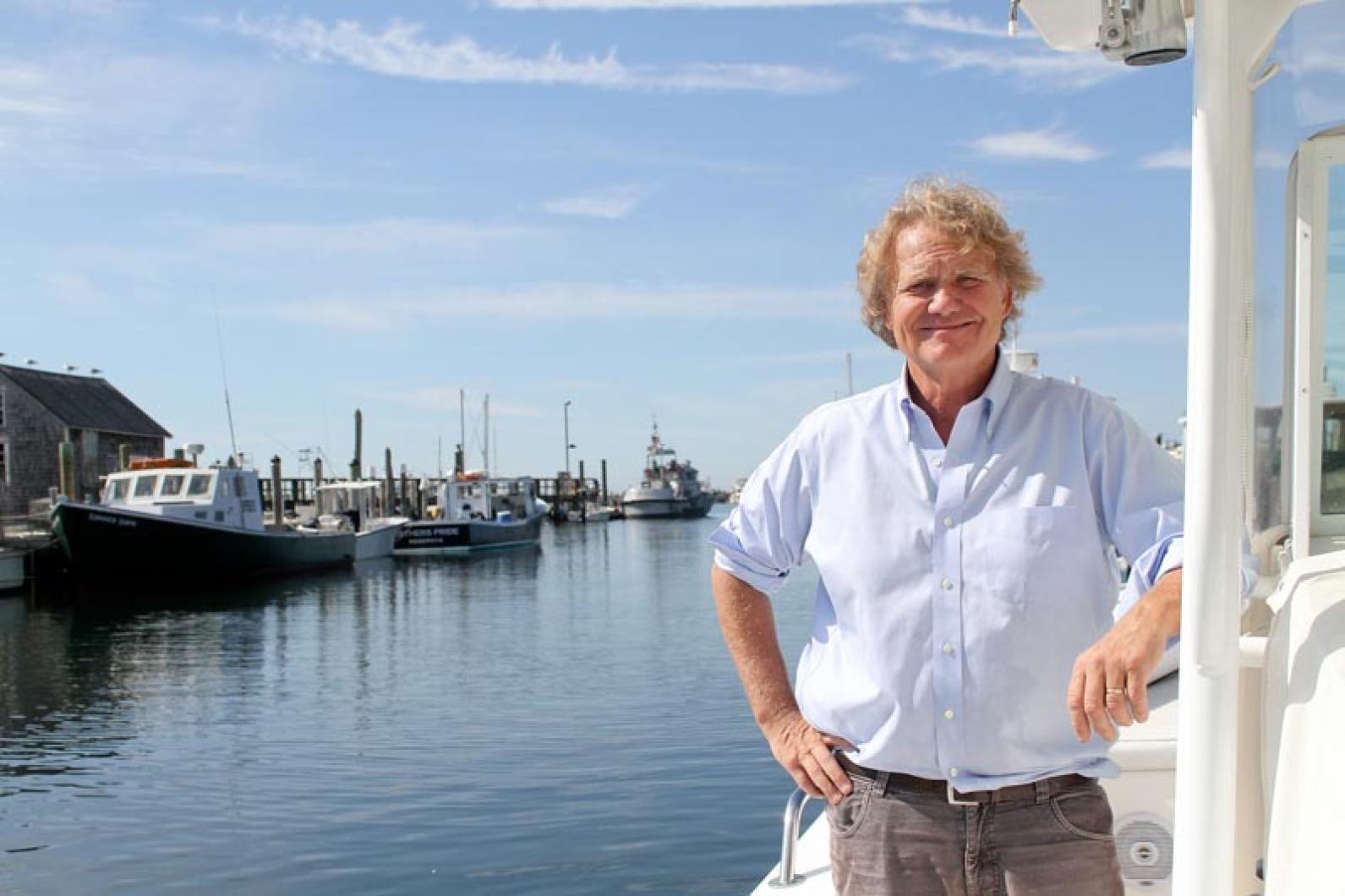Vineyard filmmaker Bob Nixon can’t escape great white sharks. Fresh from months of shooting the apex predators in the Pacific for a Discovery Channel special, last Tuesday afternoon he again encountered the animal, this time 100 feet off the Menemsha jetty. While the veracity of recent great white sightings on the Vineyard has been the subject of some debate, Mr. Nixon is fairly confident he saw the real deal. On board with him at the time was Dr. Sylvia Earle, one of the world’s preeminent oceanographers.
“We saw it just off the breakwater,” Mr. Nixon said in an interview Friday at the Beach Plum Inn, which he owns along with his wife Sarah. “It was about 12 feet long and we followed him for about 15 minutes. If you think about it, the jetty is the perfect spot. It’s why it’s such good fishing. Sylvia’s reaction was, ‘how fantastic.’”
This Thursday, great whites get the star treatment as Mr. Nixon’s documentary film Great White Highway, narrated by fellow Islander Ted Danson, holds its world premiere at 9:45 p.m. at Owen Park in Vineyard Haven. Admission is free. The film will later run as part of the Discovery Channel’s newly conservation-minded Shark Week on August 16 at 9 p.m. The documentary follows a team of scientists as they deploy cutting-edge technology in an effort to learn more about the much-maligned and still poorly understood fish.
“It’s kind of incredible,” said Mr. Nixon. “One of the largest predators in the ocean and we hardly know anything.”
Thirty miles off the Golden Gate Bridge lie the Farallon Islands, a bleak moonscape of rocks that jut out of the Pacific Ocean as uninvitingly as shark fins. For more than two decades researchers have converged on this spot as one of the prime sites in the world to study great whites, congregating as they do in the fall to eviscerate elephant seals in spectacular acrobatic assaults that see both predator and prey launched out of the water. It’s where researchers like Barbara Block of Stanford have come to know, personally, a whole posse of sharks with names like prohibition-era gangsters: there’s Bite Head, Flat Top, Scar Girl, Chomp, Rooster and the venerable old hand of the crew, Tom Johnson, who was first seen in the area 25 years ago.
“Every year he comes back he’s extending the longevity baseline for white sharks,” said Mr. Nixon.

When Tom Johnson was first sighted and photographed by a natural history guide of the same name, he helped researchers realize that the notches on each shark’s dorsal fin provided something like a fingerprint, by which individuals could be identified year after year. Now, after tagging more than 100 sharks, Ms. Block and her crew have begun tracking the mysterious and often far-flung movements of the sharks. And she hopes that the general public will soon be able to do the same: her team is currently developing an iPhone and iPad application that will allow users to track the sharks’ movements in real time.
“We’re really trying to connect the public with these individual sharks,” said Mr. Nixon.
As the information from their satellite tags has begun to pour in, certain hot spots and highways have emerged in the great white world. After spending the fall patrolling the California coast feeding on elephant seals, the sharks tend to disperse, with many of the males making a beeline thousands of miles southwest to an otherwise unremarkable part of the ocean playfully named White Shark Cafe. Despite the name, little in the way of food exists for the sharks there, and scientists are puzzled by the annual congregation. Meanwhile many females, especially pregnant ones, head to Hawaii for the winter and spring, while a few brave souls head down to the Cafe to mingle, and scientists suspect, to breed.
“What is up with the females?” Mr. Nixon asked after a screening of the film. “We hope to go out to the White Shark Cafe in the future to figure it all out.”
Mr. Nixon’s film certainly captures the majesty and terror of the animals which materialize dreamlike from the blue below, tooth-studded and gape-mouthed 7,000-pound torpedos, with their characteristic primal gaze. At the same time, the sharks, at an estimated 220 total in the Pacific, are threatened, mostly by the shark fin soup trade, and need our love. It’s why the documentary includes the obligatory reassurance that when sharks attack humans it is almost always a case of mistaken identity, a fact that is of little consolation to the surfers and swimmers who have been victims of rare shark attacks. But in one striking interview in the film, Ron Elliott, a former Farallon urchin diver-turned-underwater videographer, describes the curiosity and shyness of the animals in the many nonlethal encounters he has had deep underwater.
Indeed, the sharks in Mr. Nixon’s film, like the bruised and battered, yet fearless, Scar Girl seem to have something like personalities. For Mr. Nixon, who spent much of the past few months in a 17-foot boat no larger than the sharks themselves, the animals inspire not fear but awe.
“They’re amazing animals and it was a privilege to be out there and meet all of them,” he said.
Mr. Nixon hopes that through his films he can help to summon the next generation of Barbara Blocks and Sylvia Earles, who will expand our knowledge and stewardship of these vast “blue Serengetis” just off our coasts.
“If you put all the deep sea canyons that we haven’t yet explored, it’s an area bigger than Australia,” he said. “It’s a whole other continent we haven’t even visited,” he said. “To young people today, everyone thinks the world is so explored. My gosh, we hardly know anything!”




Comments (5)
Comments
Comment policy »